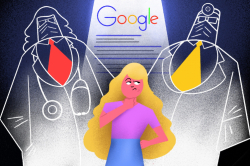The main principles of homeopathic medicine were explained by Samuel Hahnemann, a German physician, at the beginning of 19th century. When he learnt a research on the use of cinchona plant in the treatment of fever, he decided to try the bark of this tree and analyze the consequences. This resulted in fever, convulsion and joint pain, which are symptoms of malaria. Judging by this experience only, Hahnemann concluded that medications cause symptoms of a disease in healthy people. Therefore, one can assume that by taking something that causes the disease in small quantities, one can cure it. This idea became the basis of the "like cures like" principle. To the present days, none of physicians could make this experiment. One of possible reasons is that Samuel Hahnemann may have had allergy to the components of cinchona.
In accordance with Hahnemann’s principles, homoeopathists dissolve pathogenic agents (or something they consider such agent) in water. For this purpose they use spores of poisonous fungi, ammonia, arsenic, parts of insects or other creatures.
However, the concentration of these components in homeopathic medications is very low and, in fact, they are almost absent — medications usually contain 10-60 kg of the pathogenic agent (sometimes the amount of the agent is 10-2000 kg). When comparing it with a size of a proton, which is equal to 1.6×10-27, it is obvious that a homeopathic solution doesn’t contain even a molecule of the agent.

Credit: depositphotos.com
But how does it work? Homoeopathists claim that water has "memory". One can find different explanations of this phenomenon in various sources. Some say that molecules of water have quantum energy. Others believe that there are magnetic fields "stay" in water and then interact with those of the human bodies. One other explanation is that there are gravitational waves that resonate with the Gravity of Earth.
According to the Memorandum of the Pseudoscientific Nature of Homeopathy, one mole of any substance contains 6.02×1023 molecules (Avogadro's number). If one constantly dilutes a single-mole solution of a homeopathic medication (1 mol/L), the probability that one liter of the 12C solution (10-24) would contain one mole of the agent will be equal to 60%. Usually, a portion of homeopathic medication contains around a millionth of such a solution. Therefore, only very few out of several million dosages will contain molecules of the solutions.
The 30C dilution ratio (10-60) recommended by Samuel Hahnemann, which is still popular, makes these medications completely ineffective, as the whole Earth contains about 1050 molecules.

ITMO University Nikita Khromov-Borisov
What about people who were effectively cured by homeopathy? What about scientific articles proving its positive results? Homeopathic medications' effectiveness is based on placebo. Usually, people with chronic diseases take them during the recurrence.
The medication cannot be effective if it doesn’t contain any active substance. Having analyzed dozens of research works, scientists came to the point that the efficiency of homeopathy was never proved scientifically, report the authors of the memorandum. Such statement was also given by specialists of the American National Center for Complementary and Integrative Health and the National Health and Medical Research Council of Australia. For example, one of articles of the British Journal of Clinical Pharmacology discloses that homeopathic pills are fakes. However, one can also find many articles that prove the efficiency of homeopathy — those are published in journals of the American Institute of Homeopathy, the British Homeopathic Association, the Russian Homeopathy Portal and others.
"The Committee for Pseudoscience Control of the RAS encourages developers of homeopathic medications to label medications with the information that their efficiency is not proved and also point out the concentration, in other words, to tell the truth about the medications. We don’t propose to forbid homeopathy, but make them give the full information of its phenomena," comments Nikita Khromov-Borisov, chemist and geneticist as well as member of the Committee for Pseudoscience Control of the RAS.

ITMO Univeristy Alexey Sazanov (in the middle)
The memorandum includes a recommendation for the Ministry of Healthcare- to revise the law on implementation of homeopathy into the Russian healthcare system which was enacted over 20 years ago. The document also includes tips for medical organizations and homoeopathists. The main idea is to prevent the situation when homeopathy is the only way of treatment. It doesn’t correlate with medical ethics, as serious diseases cannot be cured by placebo. For instance, five months ago, the Independent reported that 10 children died after taking homeopathic teething pills that contained belladonna, a perennial herbaceous plant, which can lead to fatal cases.
"Surely, people should have the freedom of choice. However, the scientific background of homeopathy doesn’t meet the requirements of modern science. Today, one can prove biological theories as precisely as theories in physics or rocket science. There are methods for analysing medications, criteria and diagnostics of their efficiency — it is related to the whole scientific field. When applying them to homeopathic medication studies, it turns out that they have no any effect at all," nots Alexey Sazanov, professor of the Department of Biotechnology at the St. Petersburg State Technological Institute.
As of now, the Ministry of Healthcare of the Russian Federation plans to organize a working group responsible for supervision of homeopathic organizations. The group will include representatives of science, conventional and homeopathic medicine.




